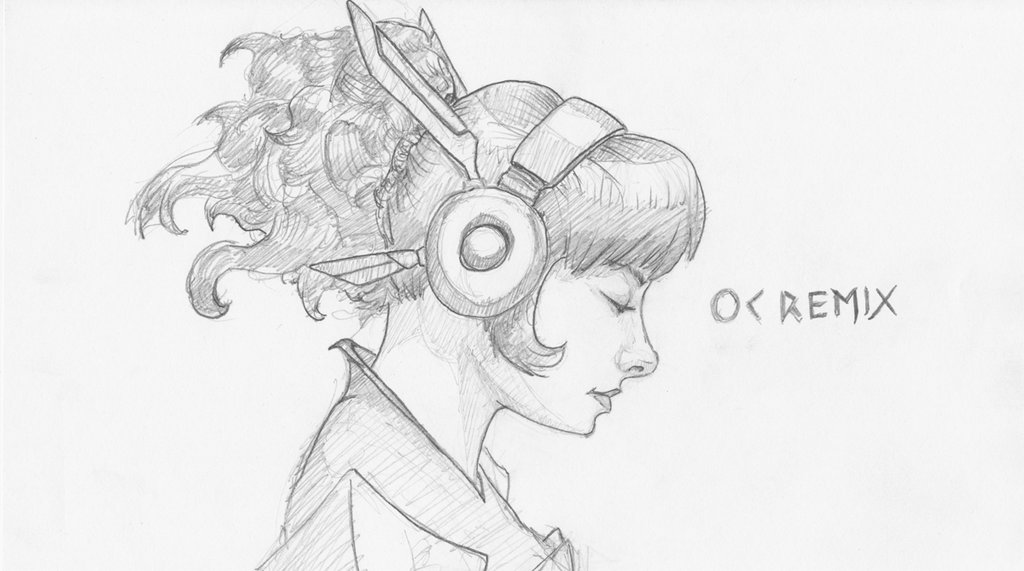-
Posts
1,127 -
Joined
-
Last visited
-
Days Won
3
Content Type
Profiles
Forums
8Tracks
Events
Blogs
Everything posted by dannthr
-
Marc Shaiman's score to Bioshock is brilliant, this has no resemblance to it outside of the fact that 2K Marin licensed the original song for use in Bioshock. I would remove the association lest you get more replies like this. Otherwise, nice vocals, but the arrangement didn't do much for me. Plus, I can't get the comparison of Shaiman's awesome string work out of my head.
-

good earplugs for noisy band?
dannthr replied to Lunahorum's topic in Music Composition & Production
My girlfriend uses Hearos--they're the best she's tried... though... admittedly, she only uses them to block out my snoring -

Backing Tracks: MIDI & General Questions
dannthr replied to Jovix's topic in Music Composition & Production
Noise in the recording could indicate a poor analog to digital conversion, and you're right in thinking that this magical "digital converter box" is just an external soundcard, since you seem to be more sensible than the MFI salesman, you may want to explore replacing your current internal soundcard. It's likely that you'll be able to procure something much more cheaply than taking a salesman's spurious advice. Most recording suites will easily save your recording in a format compatible with most mp3 players, so I wouldn't worry about that step too much unless you don't currently have a recording suite. Can you give more information about your setup? -

See, I'm trying to create this toney bass thing...
dannthr replied to MrKyle's topic in Music Composition & Production
you could probably tweak a number of drum sounds you already have access to to get this. Think about pitch shifting and running filters on drum samples you already have. -
I think it was like... W&W 2.5 or something.
-
I definitely see that point. I just don't see how it's necessary. As an exercise I'd much rather challenge myself to step outside of my box than expect a computer to enlighten me as to the way. Typically, when I approach composition, I have a harmonic aesthetic. It's not always the same aesthetic from one composition to the next, but I think it's important to build that vision as I compose. I respect that some composers are loose about their composition aesthetics, but I'd much rather listen to a composer slam their hands to the keyboard and make a POINT about looseness over computer-aided harmonization for looseness' sake (or the phrase I'm skipping around: For Laziness' sake).
-
I think that's a good point, actually. It could be beneficial to youngsters first learning about harmonization, but at the same time, a good, well explicated book could serve the same purpose AND at least with the book there's a higher chance the beginner will learn something and apply it (whereas the software could potentially always be a crutch). It's cute that Analoq presumes himself the moderator. Software, like composers through practice, is programmed to bias. Algorithmically, some kind of artificial intelligence must, at some stage, evaluate the appropriateness of a harmonization. This evaluation will be dependent upon the flexibility of the program as it was designed. This is no different than the flexibility of a composer's imagination. Here's what bothers me, personally, about this sort of computer programming in an attempt to bring the conversation to a higher level as requested, eh? Composition, as an art, like any art, depends upon an aesthetic vision. Ideally, this aesthetic visionary is the composer him/herself. I would personally never use an auto-harmonizer for two reasons. 1) When I compose, I have an aesthetic direction that drives the choices I make when I harmonize, and 2) because I am a synesthetic, there are harmonic colors that for me create a secondary or background coherence that underscores this aesthetic vision. For me, these are crucial elements for my very personal artistic work. In my eyes, the utilization of an auto-harmonizer is a kind of surrender of artistic control and artistic vision. I don't think that's necessarily appropriate unless the point is that a computer has composed the entire work. In which case I'd be much more interested in one of those picture to music computer algorithms or something that emphasizes computer-based-composition as an artistic point. I just don't usually think people at this site care about composition as a serious art. We'll see, I suppose...
-
Hahah, this discussion can hardly be considered mature, regardless of whatever input I may have had. Now if, Analoq, you want to steer the discussion into something mature, then do so, but using Nicholestein as cannon ball is hardly mature. If you want a mature discussion about auto-harmonization then you need to start discussing the philosophical implications of computer aided composition. To do that, however, you have to go back, back, back to a foundation: What is melody, and at what point is harmony separated from melody? There is a legal concept of melody which drives how we legally define music for purposes of copyrighting, but when I harmonize across the orchestra, can what my violas play be considered a melody of their own? Even if they're meant to simply harmonize with my first violins, at what stage do we define what they do as harmony and not melody? So if we really want a mature discussion about the philosophical implications of computer aided composition, we have to start there so we can better understand what the computer is doing for us and what is achieved or lost by the automation. Though, I wouldn't normally expect a conversation like that here, hahah, so I'm hardly going to be the one to encourage it!
-
Oh noes, how could I ever live without a computer to assist me in creating harmonies? The computer is so much more imaginitive than I, what ever will I do? Apparently this feature uses harmonies that require more than 10 fingers to reproduce. Truly astounding! Seriously? If I want a fresh perspective, I'll go to another musician. Hahah! Am I the only one with friends?
-
I can not recommend buying products through MFI. With that said, the THOUGHT PROCESS there is that you just linked like 10 people to their site and retail, my friend, is ALL about foot traffic.
-

how do you make music that dosn't suck?
dannthr replied to Nicholestien's topic in Music Composition & Production
Yes all of that, but also, sometimes you just have to be someone else. -
But I want that Klondike bar! I did a Lufia 2 remix like 8 years ago: http://www.dannthr.com/samples/derived/videogame/Dannthr_Lufia_suite.mp3 I think I'd like to revisit that music...
-
EDIT: Hahah, wikipedia explained it better: http://en.wikipedia.org/wiki/Headstock#Signature_headstock_outlines ============================================ The guitar head should tell--each company has a slightly different shape to their heads. Let me explain: Check out the heads of the following guitars Squier: http://img.photobucket.com/albums/v223/Dannthr/Tutorial/BulletDBL-large.jpg Fender: http://img.photobucket.com/albums/v223/Dannthr/Tutorial/StratAMM3SB-large.jpg They look the same. As I said, the guitar head is like the manufacturer's signature--a kind of branding--and as you know, Squier is a sub-branding of the Fender brand. Hence the similarities. Now some different ones that you'll find consistent as a branding mechanism for the following brands. A Parker: http://img.photobucket.com/albums/v223/Dannthr/Tutorial/FlyMojoFlmBCh-large.jpg An Ibanez: http://img.photobucket.com/albums/v223/Dannthr/Tutorial/RGA121VLF-large.jpg A Gretsch: http://img.photobucket.com/albums/v223/Dannthr/Tutorial/G5135-large.jpg A Gibson: http://img.photobucket.com/albums/v223/Dannthr/Tutorial/SGDBR1GH-xlarge.jpg An Epiphone: http://img.photobucket.com/albums/v223/Dannthr/Tutorial/EGG4CHCH-large.jpg Now what's interesting is that Epiphone is a sub-branding under Gibson. As you can see, both heads have that trademark cupid's-bow dip in the middle top but they gave the Epiphone an extra bevelling to create a distinction. The heads are similar to the Gretsch, but as you can see, there are specific characteristics that distinguish them.
-
THE TRUMPET was released. It's a fully featured Kontakt instrument with like... 3 variant Bb Trumpets, a Piccolo Trumpet, a German Trumpet, a Cornet, and a FlugelHorn. The demos are pretty damn sick: http://www.samplemodeling.com/en/demos.php And the footprint is tiny.
-
Same. I think the forum broked.
-
Project SAM Orchestral Brass has a really great LOW-END, deep warm brass sound and has a lot of metalic buzz, but not on the high-end. With some processing though, you can probably get it pretty buzzy. It's a Kontakt/Giga library though.
-

Software for sale; great stuff, low prices
dannthr replied to zircon's topic in Music Composition & Production
Just wanted to mention that Garritan Orchestral Strings has been an amazing stand-by for a lot of professionals and that it's been used in a ton of productions that I'm sure a lot of you are familiar with, from TV series' like Monk to Warcraft II's OST. -
Yeah, I never owned an Atari either--most of my experience with these games is with stuff like classics compilations.

